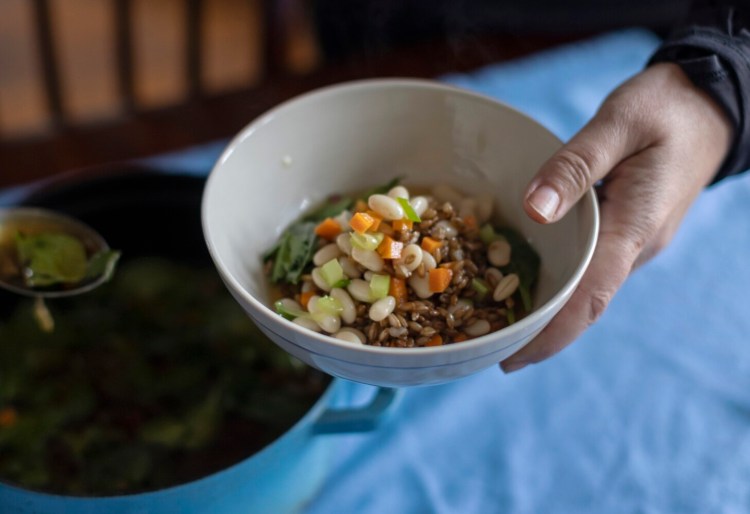For those who celebrate, Happy Easter.
For those who don’t, let me tell you a more secular story about hope and regeneration.
Regenerative agriculture comprises a set of farming practices that helps crops most efficiently pull carbon from the air and sink it underground to improve soil health, combat climate change and increase crop yields. Talking about these practices can lead you down a rabbit hole as fast as the Easter Bunny can.
Literally speaking, rabbit holes running through topsoil in balanced ecosystems have several regenerative qualities. They allow air to reach plants’ roots and give them space to grow. The tunnels created by any critters, really, also help water properly drain through the soil. And the critters themselves leave nutrient-dense droppings that act as natural fertilizers.
In the more Alice-in-Wonderland figurative sense of going down a rabbit hole, talking about regenerative agriculture can lead to all sorts of weird and wonderful discoveries. Take the dizzying array of microbes and fungi that feed off each other in a world with healthy soil, for example. Or consider how myriad crop rotation and livestock grazing schemes can render fields fixed with nitrogen and rich in biodiversity. Even without a magic looking glass, you can step into a world where farmers can measure the carbon sequestered in their fields and sell that capacity as a high-priced commodity on the carbon off-set market.
“Treating the soil like a living organism and acknowledging the relationship (and even communication) between fungi and the roots of plants is where best practice in farming is headed,” says Amber Lambke, founder of Maine Grains in Skowhegan. Maine Grains offers organic heritage grains sourced from farms in the Northeast and flours milled from them. The company also offers a line of “Crop Rotation” dried beans grown by the farmers who periodically plant beans, as a regenerative measure, in fields where the soil has been depleted by several seasons of wheat production.
Do the crops grown in soil enriched by these regenerative farming practices hold more nutritional value than conventionally reared crops do?
“We are increasingly becoming aware that what we put into the soil is what we get out of the soil in terms of nutrients,” says Lambke. The evidence has been mostly anecdotal to date, but preliminary results from a study conducted by scientists from the University of Washington have yielded some hard data that sheds light on the question.
The experiment tapped farms in ten locations across the United States, from Sebastopol, California, to Lebanon, Connecticut, all of which have employed soil-friendly practices for five years or more. A retired soil conservation scientist with the U.S. Department of Agriculture visited all the farms and sampled their soil in summer 2019 to assess the carbon content (also called organic matter) of each. The participating farms then each grew one acre of peas, sorghum, corn or soybeans to compare with the same crops grown on a neighboring farm that uses conventional agriculture methods. The farmers sent samples of their crops to lab facilities at the University of Washington, Oregon State University and Iowa State University for nutrient density analysis.
Preliminary results showed that the crops grown in soil enriched by regenerative agricultural practices offered healthier nutritional profiles than those grown on neighboring, conventional farms. The food grown using regenerative practices had more magnesium, calcium, potassium and zinc; more vitamins, including B1, B12, C, E and K; and more phytochemicals – compounds that reduce inflammation and boost human health. These crops also had lower levels of sodium, cadmium and nickel, all elements considered detrimental for human health.
The lead scientist on the study, University of Washington Earth and Space Sciences Prof. David Montgomery, designed the study while conducting research for the upcoming book he wrote with his spouse, Anne Biklé, a biologist with experience in watershed restoration, environmental planning and public health. The book, “What Your Food Ate: How to heal our land and reclaim our health,” is due out in June.
Sounds like some good summer reading.
Local foods advocate Christine Burns Rudalevige is the editor of Edible Maine magazine and author of “Green Plate Special,” both a column about eating sustainably in the Portland Press Herald and the name of her 2017 cookbook. She can be contacted at: cburns1227@gmail.com

Adding the cooked white beans (from Fairwinds Farms in Topsham) to the chicken broth, which was made from stewing hens from Apple Creek Farm in Bowdoinham. Brianna Soukup/Staff Photographer
Regenerative White Bean and Rye Berry Soup
If you use beans and grains from Maine Grains in Skowhegan in this soup, you’ll be supporting regenerative farming practices while you make a warm meal on a cool spring day.
Serves 4
2 tablespoons olive oil
1/2 cup chopped carrots
1/4 cup chopped celery
1/4 cup chopped spring onions
4 cups chicken broth
1 teaspoon smoked dulse flakes
2 cups cooked beans
1 cup cooked rye berries
1 cup baby spinach
1/4 cup chopped parsley
Salt and pepper
Warm the olive oil in a large pot over medium heat. Add the carrots, celery and onions. Cook the vegetables gently for 5 minutes.
Add the broth and dulse. Bring to a simmer and cook until the carrots are tender, 4-6 minutes. Stir in the beans, rye berries, spinach and parsley. Simmer for a few minutes until the beans and rye berries are warm, and the spinach starts to wilt. Season the soup with salt and pepper to taste.
Serve hot.
Send questions/comments to the editors.



Comments are no longer available on this story